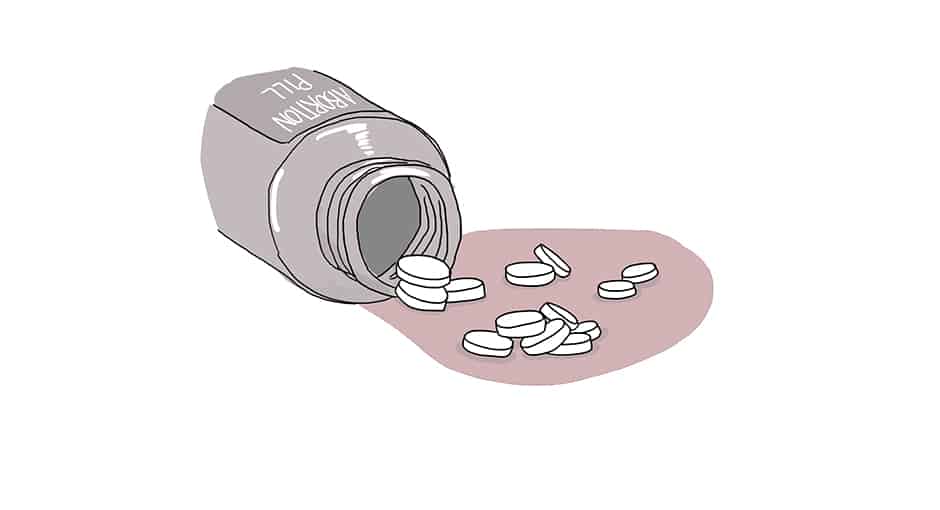Women in over 50 countries worldwide have access to safe, private, and effective abortions that do not require surgery. Canadian women, however, aren’t among them.
Mifepristone, an abortion medication that can terminate pregnancies up to nine weeks in, has been called the “gold standard” of abortion drugs by the World Health Organization (WHO). Mifepristone has been under review for approval by Health Canada for over two years. The decision was further delayed in January due to concerns about the drug’s safety.
However, some U of T researchers question Health Canada’s reasons for the delay, pointing to the large body of data suggesting that mifepristone, also called RU-486, is safe and provides many benefits for patients.
“[M]y opinion is that this is mainly a political problem,” says Dr. Donna E. Stewart, U of T professor and inaugural chair of Women’s Health at the University Health Network, in an email to The Varsity.
“RU-486 has been approved years ago over the objections of anti-choice lobbying by most developed countries. Health Canada, the regulator, should be politically independent, but in my opinion and [that of] many others, is not,” says Stewart.
Mifepristone has been available in China and France since 1988. It has been legally available in most Western countries, including the United States, since 2000. Canada is one of the last remaining developed countries to not accept the pharmaceutical.
In an emailed statement to The Varsity, a Health Canada spokesperson states that the agency could not comment on specific decision timelines for drugs under evaluation, but indicated that all cases are subject to “detailed scientific review” prior to approval. CBC News reported that Health Canada submitted a request for more information about mifepristone from the manufacturer, thereby putting off the decision until the fall.
However, Stewart believes such caution is unnecessary, asserting that the safety of mifepristone “is not an issue.”
“RU-486 is not only safer than going into hospital for a surgical abortion but also provides much more privacy as the woman can take it at home,” Stewart says.
Mifepristone, an antiprogestin, works by blocking progesterone, causing a thinning of the endometrial lining and softening the cervix. This makes the uterus more susceptible to prostaglandin, administered one to two days after mifepristone. Prostaglandin, a lipid that acts like a localized hormone, helps to induce an expulsion of the pregnancy tissue similar to a natural miscarriage. This process does not require hospitalization and takes place over a few days, primarily in the patient’s home.
Dr. Sheila Dunn, one of U of T’s leading proponents of mifepristone, noted in a 2014 report that only 0.4 per cent of patients experience serious complications after using mifepristone. The drug effectively terminates pregnancy 97 per cent of the time.
Canadians currently have limited access to the abortion drug methotrexate, the use of which is not recommended by the WHO. Methotrexate, a teratogen and cytotoxin, puts the fetus at risk of mutation should the termination fail. It acts by halting the division of embryonic cells, a method with a lower success ratio than mifepristone.
Dunn notes that the administration of methotrexate is more labour-intensive than mifepristone, requiring multiple injections and follow-up appointments over a period of weeks, which makes its use unfeasible for rural settings. In a 1996 study, U of T professor Dr. Lorraine Ferris wrote that the nature of this method “precludes [its] adoption… as an alternative to surgical abortion in geographic areas where surgical abortions are not available and where making a return visit would be difficult for the patient.”
Some researchers see denying access to mifepristone as a right-to-health violation in part due to this reason. One 2008 report suggests that the failure to provide access to mifepristone entails a failure to deliver acceptable reproductive healthcare, a service to which women are entitled under the International Covenant on Economic, Social, and Cultural Rights. Dunn calls this failure “a form of discrimination.”
The report suggests a systemic bias in Canada against contraceptive and abortifacient pharmaceuticals. It also argues that abortions serve mental health needs.
Stewart questioned the courage of Canadian politicians in dealing with the issue of access to safe medical abortion.
“As this is an election year you can expect more stalling,” Stewart says.


